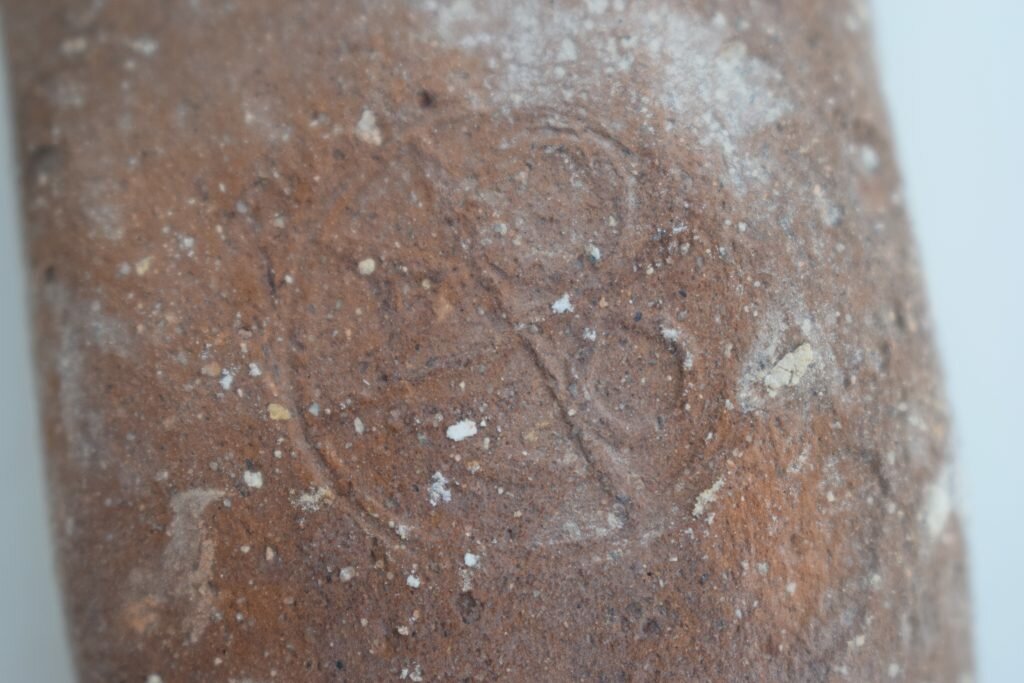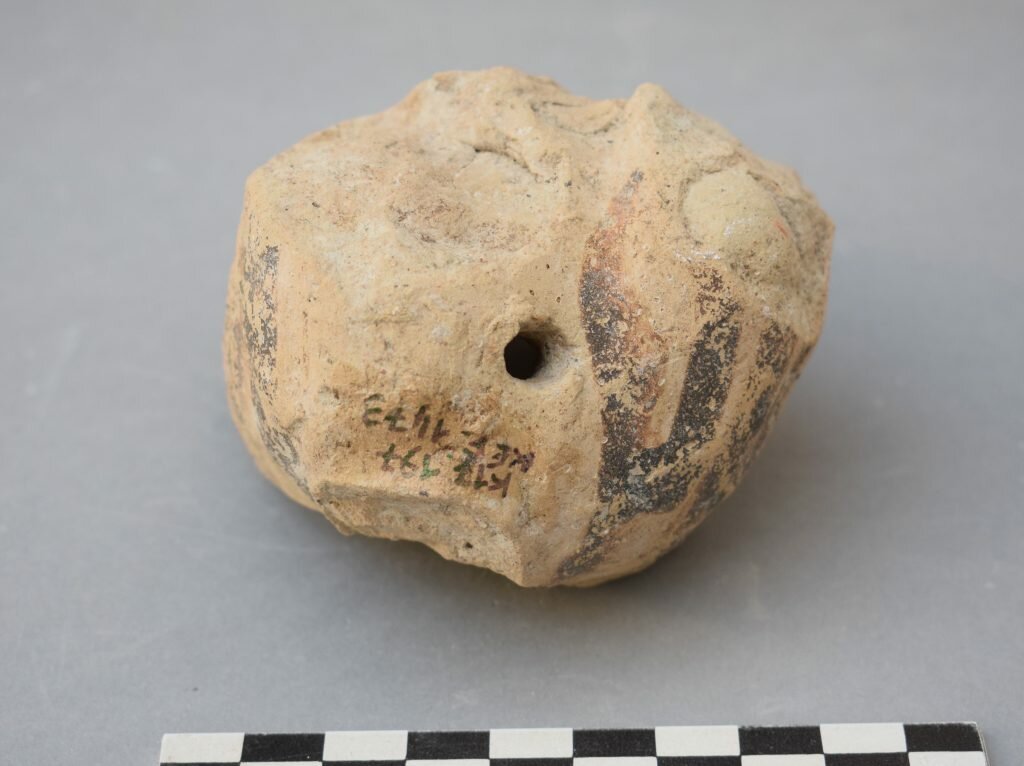Archaeological artefacts can bear various types of markings, received at different moments during their lifetime.
Some are made at the time of the manufacturing: they identify the object as the product of a specific workshop, be it a unique work of art (for example a sculpture signed by an artist) or a series (for example mouldmade lamps manufactured by the same atelier). They can also certify the quality and conformity of the product (for example stamps impressed on wine amphora handles, Fig. 1). Other markings, made after completion of the artefact, correspond to its commercial handling (for example prices incised on the base of vases). Others still testify that the artefact belongs to a person (incised or painted personal name), or to a god (in case the artefact has been dedicated in a sanctuary).
 (Fig. 1)
(Fig. 1)
Markings also occur during the second life cycle of the artefact, when it is discovered during archaeological excavations. Markings can indicate the site of discovery, the date of the discovery, the specific stratigraphic unit, the nature of the artefact… When conserved in a museum or a private collection, the artefact can also receive other markings identifying its owner or its number in a local inventory.
To sum up, markings can have many meanings, indicating the general provenance of an artefact (be it its place of production, its place of discovery or its collection history). They are thus instrumental in tracking circulating artefacts and they give important clues to ensure their traceability. Traffickers generally remove ancient markings (taking labels off, sometimes even breaking the artefacts into several pieces) or they create fake ones (along with false documentation).
What markings are used? No universal system has been adopted and markings generally refer to a local system, to local databases (of archaeological excavations and/or of museums). When confronted to a marked object one cannot immediately find out its provenance and one has to search by combining clues (type of artefact, type of label, chronology…). Moreover, methods of markings are varied and they are rapidly evolving, from traditional markings (with ink, paint or indelible marker, Fig. 2) to bar code and, in the near future, invisible inks using nanotechnologies. Difficulties are manifold, since marking has to comply with many – often contradictory – requirements, as aptly summarized in the ICOM good practices repository:
- security: marking should be difficult to remove;
- reversibility: marking should not be indelible so as to keep the integrity of the artefact;
- safety of the object: marking should not cause damage to the artefact;
- discretion but visibility;
- convenience and safety of the staff (who mark and handle the artefacts).

(Fig. 2)
How to mark artefacts is thus an urgent challenge to be addressed in the fight against trafficking of archaeological goods.
Link:
- ICOM International Observatory on Illicit Traffic in Cultural Goods: Good practices
[Ilustrations: (Fig. 1.) Stamped amphora handle (© Mission archéologique de Kition); (Fig. 2.) “Traditional” marking of an archaeological artefact (© Mission archéologique de Kition)]

